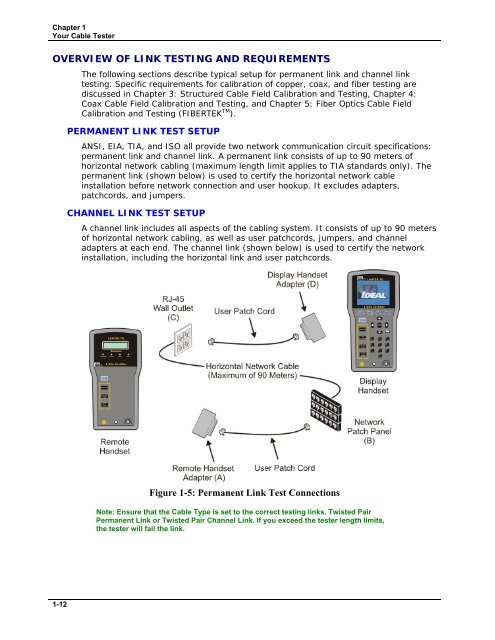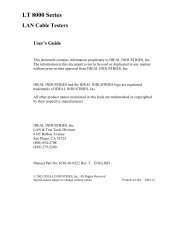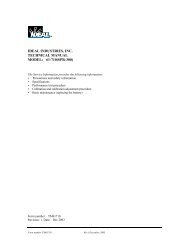LANTEK CABLE TESTER USER'S GUIDE - Ideal Industries
LANTEK CABLE TESTER USER'S GUIDE - Ideal Industries
LANTEK CABLE TESTER USER'S GUIDE - Ideal Industries
You also want an ePaper? Increase the reach of your titles
YUMPU automatically turns print PDFs into web optimized ePapers that Google loves.
Chapter 1<br />
Your Cable Tester<br />
OVERVIEW OF LINK TESTING AND REQUIREMENTS<br />
1-12<br />
The following sections describe typical setup for permanent link and channel link<br />
testing. Specific requirements for calibration of copper, coax, and fiber testing are<br />
discussed in Chapter 3: Structured Cable Field Calibration and Testing, Chapter 4:<br />
Coax Cable Field Calibration and Testing, and Chapter 5: Fiber Optics Cable Field<br />
TM<br />
Calibration and Testing (FIBERTEK ) .<br />
PERMANENT LINK TEST SETUP<br />
ANSI, EIA, TIA, and ISO all provide two network communication circuit specifications:<br />
permanent link and channel link. A permanent link consists of up to 90 meters of<br />
horizontal network cabling (maximum length limit applies to TIA standards only). The<br />
permanent link (shown below) is used to certify the horizontal network cable<br />
installation before network connection and user hookup. It excludes adapters,<br />
patchcords, and jumpers.<br />
CHANNEL LINK TEST SETUP<br />
A channel link includes all aspects of the cabling system. It consists of up to 90 meters<br />
of horizontal network cabling, as well as user patchcords, jumpers, and channel<br />
adapters at each end. The channel link (shown below) is used to certify the network<br />
installation, including the horizontal link and user patchcords.<br />
Figure 1-5: Permanent Link Test Connections<br />
Note: Ensure that the Cable Type is set to the correct testing links. Twisted Pair<br />
Permanent Link or Twisted Pair Channel Link. If you exceed the tester length limits,<br />
the tester will fail the link.





